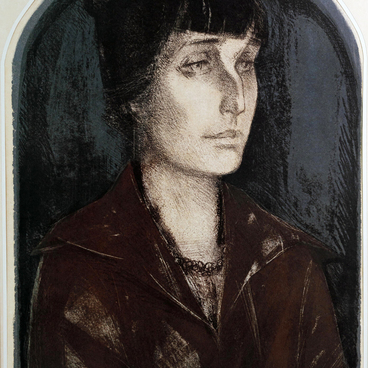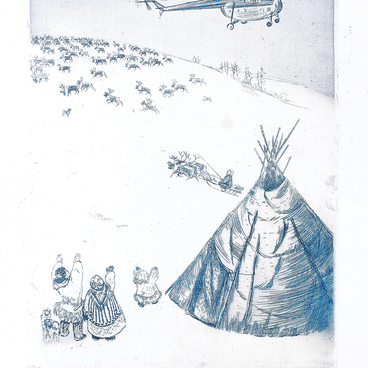The exhibition of the Irbit State Museum of Fine Arts features a drawing made with a combination of lead pencil and sanguine. Savely Kochurin depicted a rural landscape, probably his home village of Kharlovskoye. In the foreground, there is a plot of arable land separated by an old wooden fence, an old barn, a pile of straw, and a large bush. Behind the fence, there is a house and a panorama of the village. The artist depicted a windy day. The bending shrub branches, grass blown by the wind, sharp lines, and strokes create a sense of a windy and chilly autumn day.
Savely Alexandrovich Kochurin was a graphic artist and a painter. He was born in the village of Kharlovskoye, Irbit District of the Sverdlovsk Region. The village is located about 26 km south of Irbit and 200 km away from Yekaterinburg, on the left bank of the Kirga River (a right tributary of the Nitsa River). The village was built in a swampy area, rather unfit for human habitation. It was founded in 1670 by three Finnish brothers — Kharlik, Kochura, and Cherta. They traveled to the Urals, trying to avoid paying yasak taxes. The name of the first brother, Kharlik, was given to the village, that of the second one, Kochura, has been preserved in the most common family name among the locals — Kochurins, and that of the third one — in the village of Chertata, which later transformed into Chertyata (“Little Devils”).
Savely Kochurin participated in the Great Patriotic War. He served as a mortar gunner, rifleman, and private of the Smersh counterintelligence agency of the 373rd infantry regiment. He went on to fight in the Soviet-Japanese War. In 1947, he was demobilized and settled in the city of Irbit. There, he worked as a technical drawing teacher at tradesman school No. 41, a movie poster artist at the Pobeda (Victory) cinema, an artist at the public park, and a 7th-rank storekeeper at the Irbit Motor Plant. In 1960, Savely Kochurin moved to the town Zagorsk near Moscow where he was an artist at the public park and later worked as a 4th-class painter at a lacquer factory for four years. All this time, Savely Kochurin did not give up on his dream of becoming a professional artist. He began his independent creative career in 1962.


